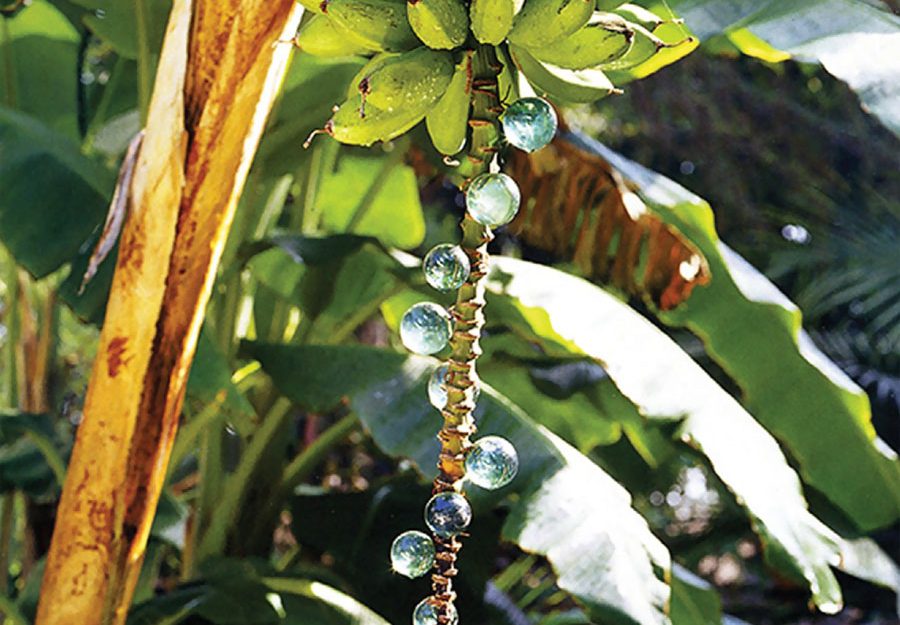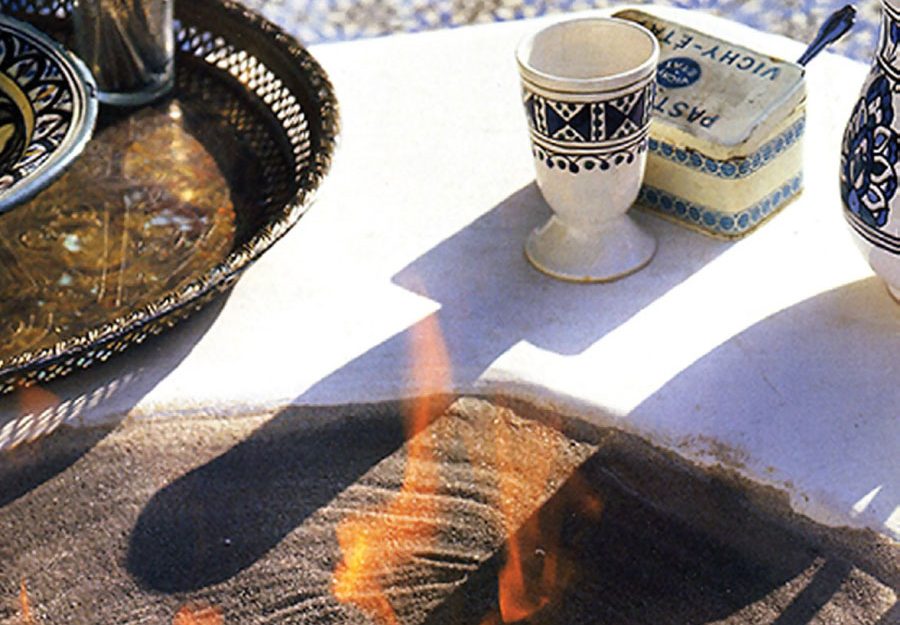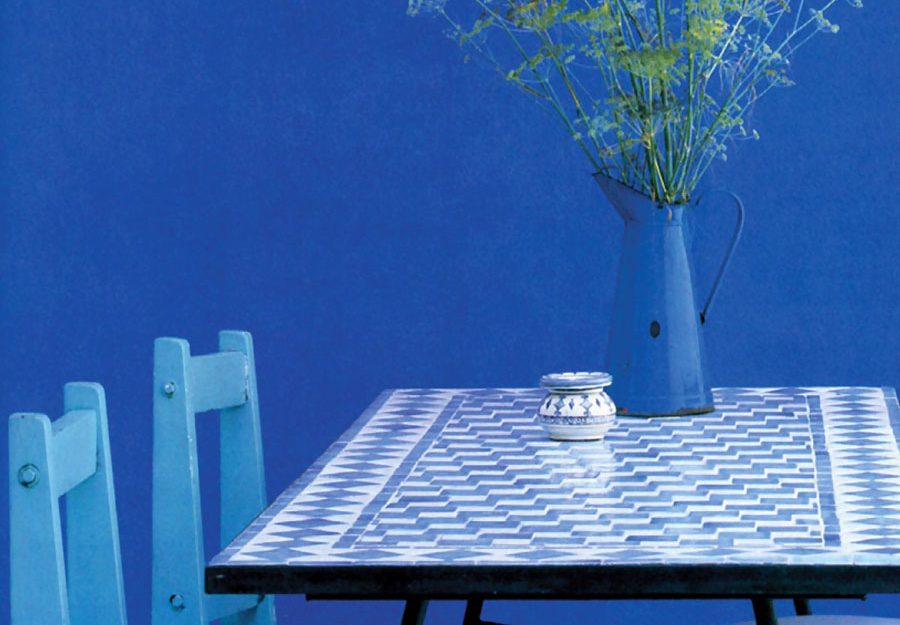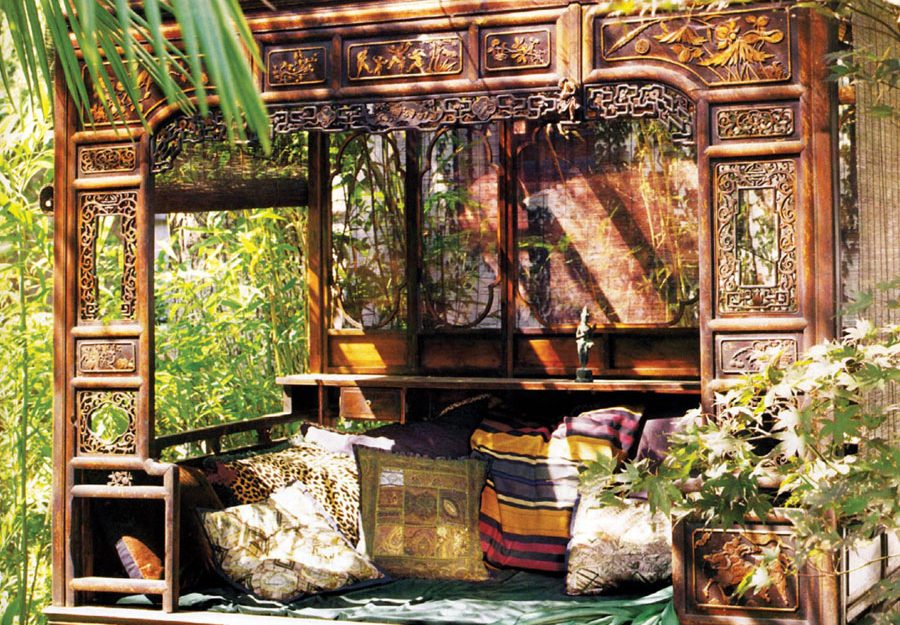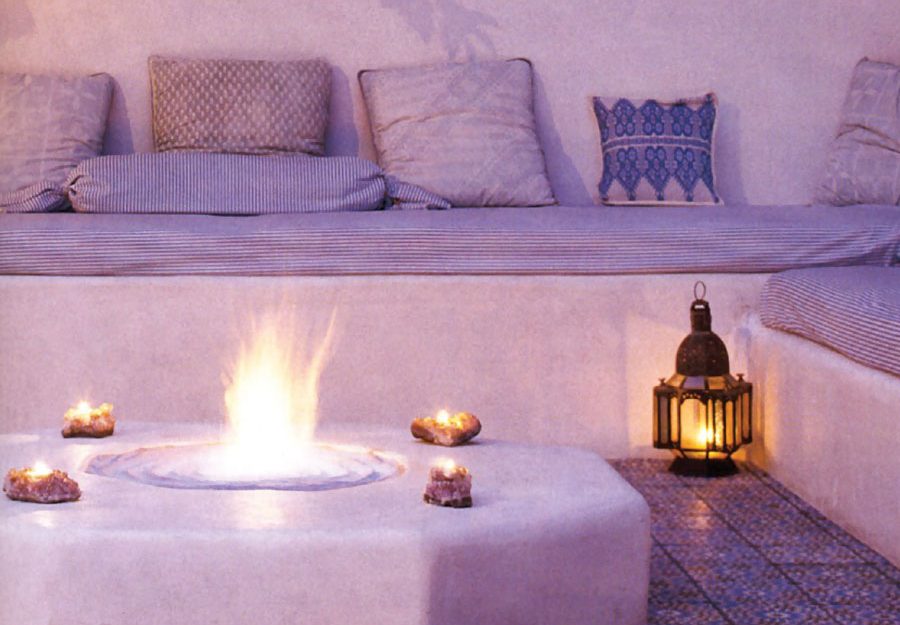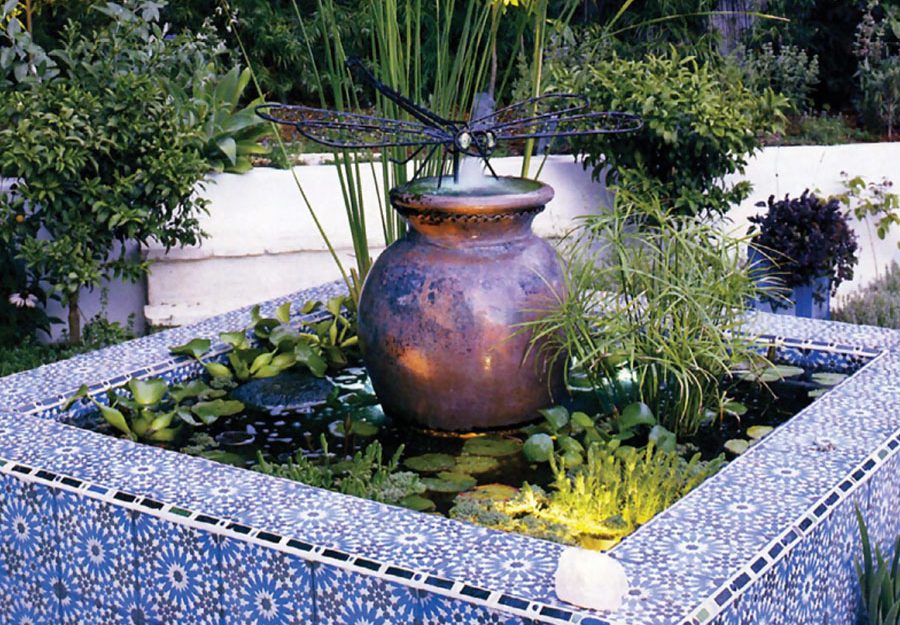“Bringing It Home”
Press Clipping from Garden Design Magazine
March/April 2002
❦
PROJECT: Ozeta House
Love of travel fills a garden with surprising plants and treasures.
Text by Christy Hobart
Photographs by Tim Street-Porter
Serious travelers don’t always make the best gardeners. If they have gardens at all, they don’t water them regularly, they let weeds go for long stretches, and they don’t bother planting specimens that bloom when they might be away. They generally have mundane, low-maintenance backyards that provide little more than a place to relax between flights. That is hardly the case for jewelry and garden designer Laura Morton. Although she passed on planting a potager—knowing that she and her husband, Jeff Dunas, spend a large part of every summer in the South of France—Morton was able to use her love of travel to enrich and enhance her garden in Hollywood, California.
“The geraniums are an ode to Jeff. He loves Greece, and they remind him of the geraniums that grow wild there,” she says, rubbing her fingers on the leaf of a rose-scented variety. Some are planted in the ground around a Morocco-inspired seating area, while others flourish in makeshift pots. “We hit the garbage cans behind restaurants in Greece,” she says of her colorful finds, “and came upon these tins. We thought the shapes were perfect for flowers.” Now, old olive-oil containers hold geraniums, and former tins for corn oil and feta cheese are home to succulents.
Hanging over the seating area with built-in banquettes are birdcages and lanterns that the couple bought in Moroccan flea markets. Now filled with flickering candles, they mimic the blue-flame fire pit in the middle of the Moroccan blue-and-white geometric-tiled patio. “We love the Mediterranean feeling of living outdoors,” says Morton, who entertains often. “I got the inspiration for the terrace area from a trip to Hammamet, in Tunisia. We don’t have the sea to look out over, but we do have the pool.” The classic blue-and-white ticking that covers the banquettes’ cushions, reminiscent of Greece, continues the Mediterranean feel, as do the creeping bougainvillea and pots of kumquats. But the little African stools? “Everything doesn’t have to be Mediterranean,” says Morton. “When I design a garden, I think of all cultures. The common thread in this garden is that it’s filled with things and plants I love.”
While she wasn’t able to have a potager because of her traveling schedule, Morton compromised by planting an herbal tea garden. And to make the most of the rich scents of the lemon verbena, bergamot, lavender, six varieties of mint, African blue basil, and rose- and nutmeg-scented geraniums, she placed the garden just to the side of the patio so the herbal fragrances can waft over to delight those relaxing around the fire. To make sure her herbs wouldn’t get an extra “watering” from her dogs, she planted them in raised chimney-flue tiles of different heights. And for fun, she hid elaborate ceramic teapots and cups amid the plantings. A ‘Rose de Rescht,’ an old damask rose, also gets a spot in the herb garden. “I like to float the petals in my tea cups,” Morton says.
The view from the cool, shaded patio and tea garden reaches across a calm rectangular pool to a whimsical fountain area at the other end of the property. But the view wasn’t always so charming. When the couple moved into the house seven years ago, a termite-infested wooden deck sat where the fountain is now, and a garden area was situated where their new patio is. “It was all wrong,” Morton says. “When you were sitting on the old deck, you couldn’t see up into the dark garden. You just looked into a black hole. So we swapped the two areas.”
Morton designed the fountain using the same Moroccan tiles that cover the patio floor. She created jeweled edges by inlaying sea glass and cobalt marbles in the concrete. Butterfly koi swim around an old Moroccan pot fitted with a pump amid dwarf water lilies, water hyacinths, papyrus, and bulrush. Above them hovers a wire sculpture of a dragonfly that Morton designed.
Although her garden looks nothing like a typical orchard, a surprising number of fruit trees are planted about. An ‘Anna’ apple is espaliered to create a fence near the fountain, and a white fig decorates a wall in the herb garden. Pink grapefruit, ‘Moro’ blood oranges, limes, and tangerines dot the landscape, as do enormous banana trees and a persimmon. When the persimmon loses its leaves, geodes and crystals, hung by Morton, appear on its branches. “Adding jewels to the garden brings in good energy,” she explains.
Follow the banana trees around the house to the side garden, and a new world—or continent—opens up. “I based this area on Japanese gardens,” she says of the narrow slope. “I love how this type of garden reveals things little by little. Everything is slightly hidden, and you see just some things at a time as you move through it.” Follow the concrete pavers a few steps, and a Kang, a Chinese opium bed, appears. “We built a Plexiglas cover for the bed. You can see trees through the cover, and sun can come through, but when it rains you’re safe and dry,” Morton says. Follow a few more concrete pavers, and you’ll see more trees and other plants: Japanese maples, a diverse collection of bamboo (Buddha’s belly, black, square, and yellow groove), gardenias, a smoke bush, coleus, tuberous begonias, sweet olive, and violets, to name a few. Toward the bottom of the area, a double white brugmansia releases its rich, intoxicating aroma. “When we moved in, the brugmansia was a twig, and we didn’t know what it was. We dug it out, moved it, stuck it in a pot, then moved it to this corner where it bloomed and bloomed,” Morton says, still surprised. “It was our big hidden treasure.” And she found it right in her own backyard.♦



